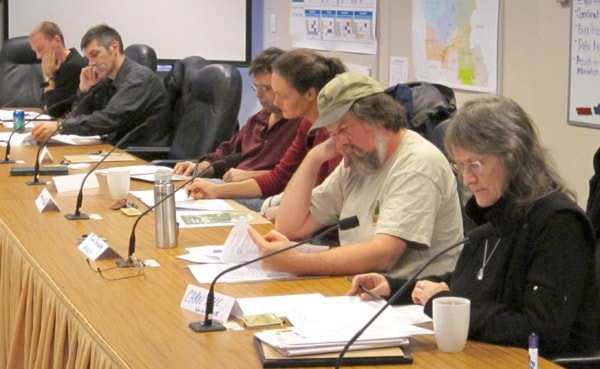Land managers from provincial, regional and local organizations met recently to develop an invasive plant management plan for the Central Kootenay.
Invasive plant species like spotted knapweed, blueweed and scotch broom are continuing to spread and impact agriculture, ecosystems, recreation and other natural resource values in the region. The Central Kootenay Invasive Plant Committee (CKIPC) is proposing to develop a regional plan that would identify priority sites and species for inventory, treatment and monitoring.
The initial meeting, held in Nelson, brought together land managers from provincial agencies, utility companies, forestry companies, fish and wildlife agencies, agricultural groups, non-profit societies, invasive plant committees and local government. After providing updates on current activities, the participants discussed the benefits of having a collaborative plan, broken out into manageable areas that they could work from.
“The issue of invasive plants is a huge problem,” said Rob Davidson from the Creston Valley Beef Growers Association. “It’s important that we work collectively rather than in isolation.”
During the meeting, participants delineated smaller sub-regional areas within the Central Kootenay called invasive plant management areas, which were a more reasonable size for planning and on-the-ground operations. Ideally, priority sites, plants, inventory, treatments and monitoring will be described for each management area.
“The season for treating invasive plants is so short and there is so much to do,” said Irene Manley of the Fish and Wildlife Com-pensation Program. “It’s important to work efficiently and strategically.”
This co-ordinated approach to planning and delivery is being used in the Boundary and East Kootenay areas.
“It has been very helpful to bring different agencies and groups together and develop a program based on partnerships,” said East Kootenay Invasive Plant Council co-ordinator Marty Hafke.
The CKIPC is currently seeking funding to continue this planning process.
“We hope to develop work plans for these new invasive plant management areas in the next few months” said CKIPC co-ordinator Crystal Klym. “We know it will be extremely valuable towards promoting a collaborative and efficient approach to invasive plant management in the Central Koo-tenay.”
For more information, contact the Central Kootenay Invasive Plant Committee at coordinator@kootenayweeds.com or 250-352-1160.
